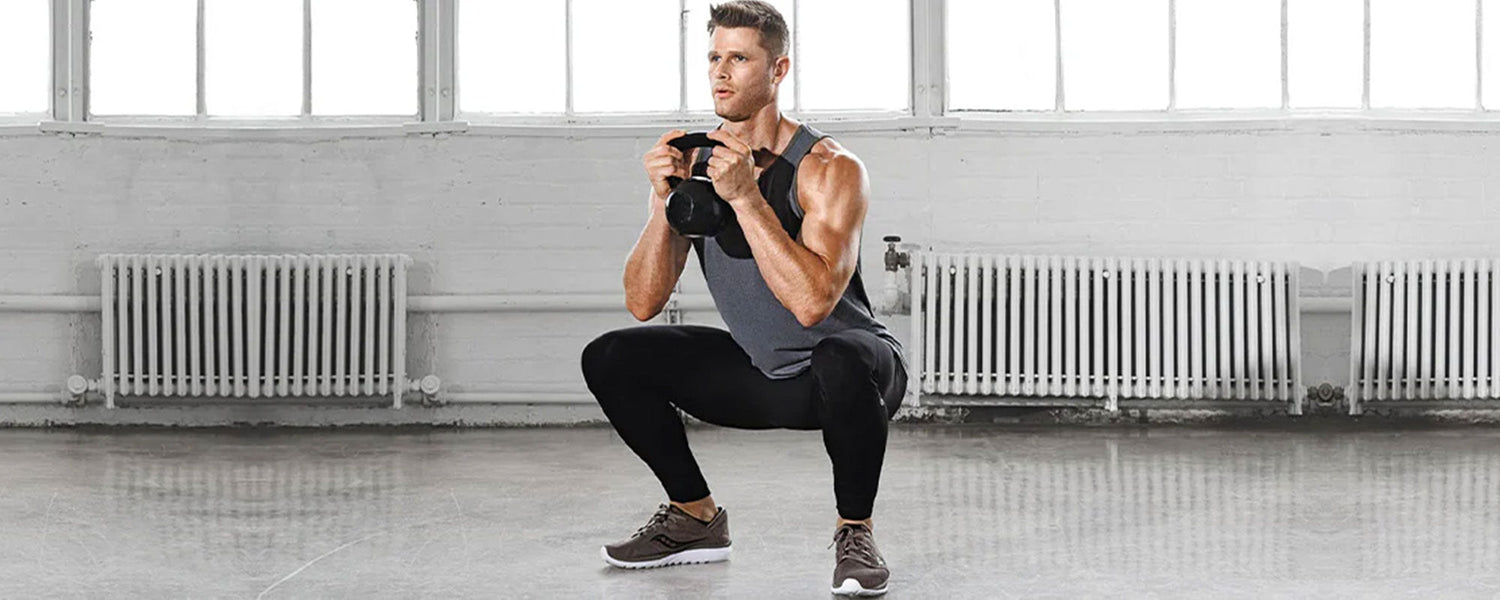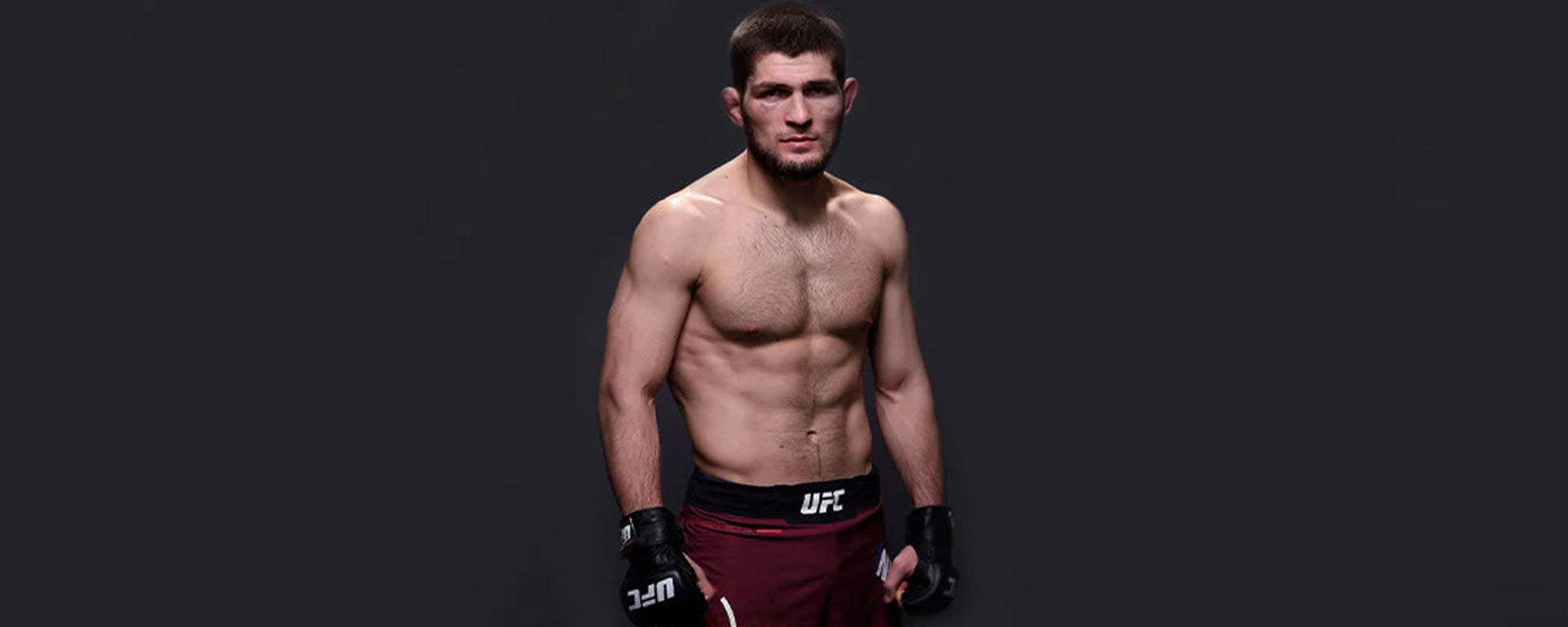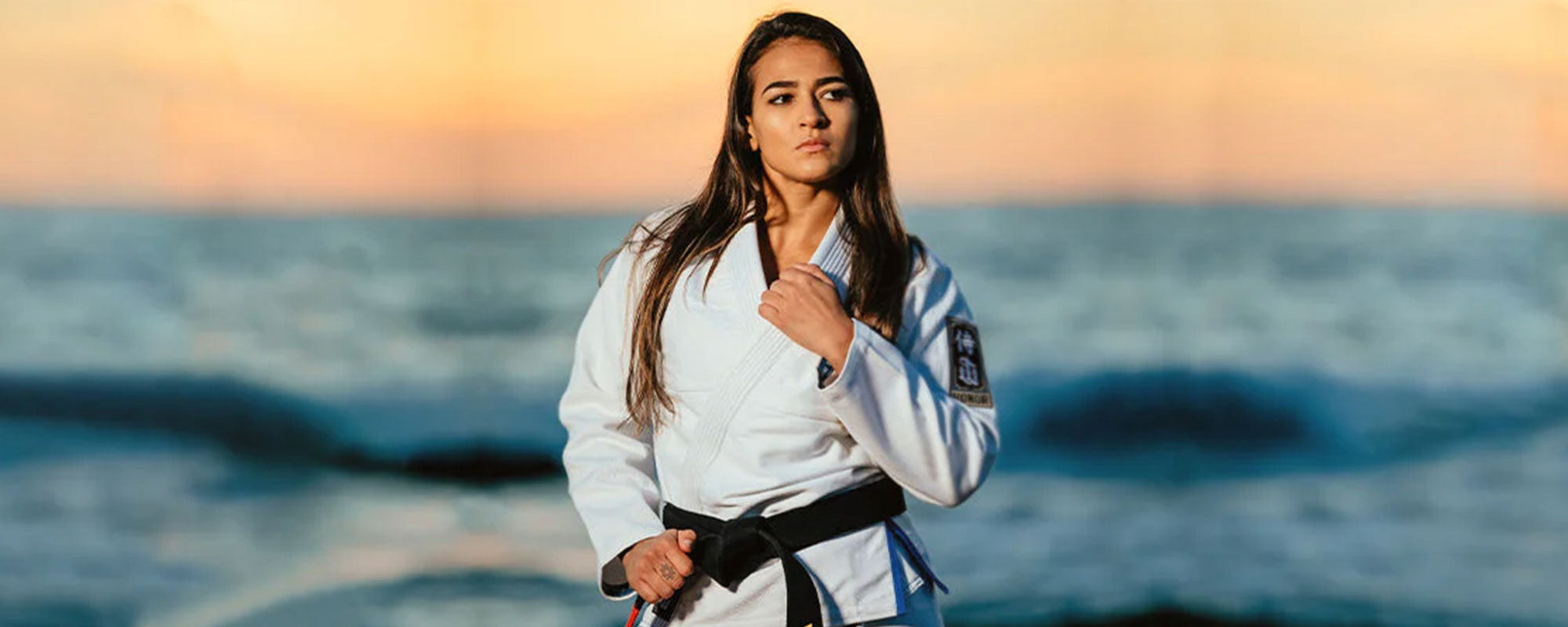Table of content
There is much ambiguity about the impact squats have on calves. Whether you want to take up squats to get a certain calf size or you plan to avoid squats because it may have the opposite effect, one common question will always come to mind – do squats bulk up or slim down calf muscles?
To formulate a satisfactory answer, it is important to shed some light on the calf’s anatomy, its uses, and the movement and position of the lower leg when we perform a squat.
Also read: What is the Correct Way to Do Calf Raises?

The calf muscle consists of the gastrocnemius and the soleus. These muscles control movements in the knees, ankles, and toes. They bear your body weight, are major plantar flexors, and activate as soon as your toes touch the ground. Hence, the engagement of calf muscles in squat exercises is inevitable. Let’s discuss the effect squats have on calves.
1. Squat – What Is It?
Doing squats is resistance training and is effective in toning your lower body muscles. Squat exercise gives shape to leg muscles, enhances fitness level, and can be easily added to any workout routine. Multiple groups of muscles – hamstrings, glutes, calves, quads, and abs – are activated when you perform a basic squat.
2. Basics – How to Squat?
Follow these steps to do a basic squat:
- Stand with your feet wider apart than hip-width, your toes pointing outwards.
- Push your chest upwards and hold it there.
- Now with your feet planted firmly to the ground, push your hips back and lower yourself. Your weight should press into your heels.
- Keep pushing yourself down till your thighs are parallel to the floor.
- Your knees should be just above your toes.
- It is best to perform up to 15 reps.
3. Role of Calves in a Squat
From the above-mentioned steps, one can infer that certain muscles provide the balance needed to support your body as you descend and then lift yourself back up into a standing position. These are your calf muscles.
Gastrocnemius muscle in the calf contracts as you bend your knee while pushing your weight into your heels. The much-needed force to lift your body comes from the same. Hence, calf muscles add massive strength to your legs as you squat.
4. Effect of a Squat on Calves
Calf muscles have slow-twitch muscle fibers and no amount of exercise seems enough at times to slim down or bulk them up, but because squats put pressure on the calves, it can only lead to bulking them up.
Furthermore, calves are the most “gene-influenced” area of the human body. Increasing their size can be extremely challenging. Even though genetics play a huge role in calf development, another anecdote claims that using weights with squats (a robust activity) helps override the effect of genes and accentuates under-developed calves. Large muscle exerts a significant amount of force and in doing so develops the potential to grow more powerful.
Performing squats regularly activates the release of GH, a human growth hormone. According to PubMed Central, the GH hormone stimulates muscle growth and helps burn calories faster, making your calves bigger.
5. Slimming Down or Bulking Up?
The conclusion drawn from the above discussion so far is that squats are not “calf-specific” exercises. It is a compound training form that works out different muscle groups. Even though calves are not the only focus of the squats, the fact that they are in control of the whole movement determines their tendency to become strong and big.
On the one hand, squats make you lose excess fat in your lower legs, making you think that your calves may slim down. Simultaneously, there is massive muscle gain if you squat every day. So, your calf size will not reduce.
Continue reading if you want bigger muscles. If you appreciate slender lower legs, then you might want to skip reading further.
6. How to Squat for Bigger Muscles?
6.1. Add Weights
Squats can be performed anywhere without equipment. There is some anecdotal evidence available that adding weights to your squat workout makes it more vigorous, augmenting muscle strength and development. The explanation is that heavier squats exert greater force and make them work more. To keep up with the demand of this “novel” activity – something they have never done before – they are left with no option but to build themselves up.
Dumbbell Squat
- Start with holding dumbbells, hands by your sides.
- Get into a basic squat as described above.
- Stand with your back straight and chest out.
- Push your hips back and lower yourself.
- Bend your knees till they are just above your toes and your thighs parallel to the ground.
- Hold for 5 seconds then push yourself back up in a standing position. Repeat.
6.2. Add Variation
Squats essentially enhance calf mass but combining them with other exercises has a better impact. A great example is the jump squat.
Jump Squats
- Position yourself as you would for a standard squat. Your feet pressed to the ground, chest up, hips pushing back and knees bent.
- Lower yourself to a squat position. This time instead of pushing your weight into your heels move to the balls of your feet and toes.
- After you reach your lowest point, thrust yourself upwards into a jump.
- Once you land, squat again and jump. Repeat. Do as many no. reps as you can.
Dumbbell Jump Squat
- To make jump squats more intense use dumbbells.
- Start with holding a pair of dumbbells you can handle.
- Hold your dumbbell by your sides, your palms facing inward.
- Your feet should be shoulder-length apart.
- Now stand with your back straight, chest out.
- Bend your knees slowly to lower yourself. Your thighs should be parallel to the floor.
- Once you reach the lowest position, use your toes to push yourself up.
- Jump as high as you can.
- Land softly, use your toes for support.
- Perform maximum no. of reps.
Dumbbell Cossack Squat
The Cossack squat when performed with dumbbells puts more stress on the calves. Here are the steps of doing a perfect Cossack Squat.
- Hold a dumbbell in front of your chest using both hands or a pair of dumbbells in each hand. (as shown in the visual)
- Stand with feet wider apart than shoulder-length. (At least 2 times more distance between the feet compared to shoulders).
- Your toes should point slightly outwards.
- Slowly move to shift all your body weight to one leg. Bend your knee so it is above the toe and lower yourself by pushing your hips back.
- Try to keep your torso straight.
- Simultaneously, move the toes of your opposite leg so they point to the ceiling.
- The opposite leg should remain straight. Hold this position for some time then push yourself up.
6.3. Combine Different Exercises
Intense Squat Workout Program
The workout is for two weeks and includes squats, raises, deadlifts, and jump rope. Following this workout for two weeks, train your calves three days a week for two months. It is important to have a gap of 48 hours to 72 hours between this workout.
Shock your calves with this ruthless 2-month program. After you finish, tune down to a comparatively lighter workout. Mix up different exercises and continue low volume rep ranges. During this period, your calves will begin to grow.
1ST WEEK
DAY 1
- Squats with weights (10 x 1 time)
- Glute and hamstring machine raise (4 x 12 times)
- Heavy Standing Calf Raise (5 x 5 times)
- Light Leg Press Calf Raise (3 x up to 30 times)
| Exercise | No. of Sets | No. of Reps |
|---|---|---|
| Squats with weights | 10 | 1 |
| Glute and hamstring machine raise | 4 | 12 |
| Heavy Standing Calf Raise | 5 | 5 |
| Light Leg Press Calf Raise | 3 | 30 (till failure) |
DAY 2
- Single Leg Calf Raises (EDT) – Do maximum no. of reps in 10 minutes.
- Jump Rope for 10 – 15 minutes.
| Exercise | Time | No. of Reps |
|---|---|---|
| Single Leg Calf Raises (EDT) | 15 minutes | Till failure |
| Jump Rope | 15-20 minutes | N/A |
DAY 3
- Heavy Deadlifts (10 x 1 time)
- Glute and hamstring machine raise (4 x12 times)
- Donkey calf raises (2 x 30 times)
- Set 1 - keep hips neutral
- Set 2 – rotate hips externally
- Set 3 – rotate hips internally
- Pause-Repeat Seated Calf Raise (3 x 8 times or till failure, Pause for 30 seconds)
| Exercise | Movement | No. of Sets | No. of Reps | Pause |
|---|---|---|---|---|
| Heavy Deadlifts | N/A | 10 | 1 | 1-minute |
| Glute & Hamstring Machine Raise | N/A | 4 | 12 | 1-minute |
| Donkey Calf Raise | Set 1 – Hips Neutral | 2 | 30 or till failure | 1-minute |
| Set 2 – Rotate hips externally | ||||
| Set 3 – Rotate hips internally. | ||||
| Pause-Rep Seated Calf Raise | N/A | 3 | 8 or till failure | 1-minute |
2ND WEEK
DAY 1
Squat with heavyweights (10 x 1 time)
Glute and hamstring machine raise (4 x 12 times)
Heavy Standing Calf Raise (4 x 6 times)
Light Leg Press Calf Raise (3 x up to 30 times)
- Set 1 - keep hips neutral
- Set 2 – rotate hips externally
- Set 3 – rotate hips internally
| Exercise | Movement | No. of Sets | No. of Reps |
|---|---|---|---|
| Squats (weights) | N/A | 10 | 1 |
| Glute and hamstring machine raise | N/A | 4 | 12 |
| Heavy Standing Calf Raise | N/A | 4 | 6 |
| Light Leg Press Calf Raise | Set 1 - Hips neutral | 3 | 30 (till failure) |
| Set 2 – rotate hips externally | |||
| Set 3 – rotate hips internally |
DAY 2
- Standing machine calf raise
(Start with a weight you can handle. Do standing raise 10 times. Then reduce the weight by 50% and perform maximum no. of reps. Follow this with maximum bilateral bodyweight reps that you can perform).
- Jump rope for 15-20 minutes.
| Exercise | Time | No. of Reps |
|---|---|---|
| Standing machine calf raise | N/A | 10 |
| Jump Rope | 15-20 minutes | N/A |
DAY 3
Heavy Deadlifts (10 x 1)
Glute hamstring machine raise (4 x 12)
Donkey Calf Raise (2 x 20, Pause for 1-minute)
Seated calf raises (3 x 5)
| Exercise | No. of Sets | No. of Reps | Time |
|---|---|---|---|
| Heavy Deadlifts | 10 | 1 | N/A |
| Glute hamstring machine raise | 4 | 12 | N/A |
| Donkey Calf Raise | 2 | 20 | 1-minute |
| Seated calf raises | 3 | 5 | N/A |
7. Wrap Up
After reading all the facts and anecdotal evidence, it can be safely said that squats trigger growth, activating and strengthening calves which make them bigger. Do keep in mind that engaging in basic squats alone might not make much difference. If you add weights, variations, and other exercises, there is a fair chance you will get thick calves.
Photo Credit: @muscleandfitness













Leave a comment
This site is protected by hCaptcha and the hCaptcha Privacy Policy and Terms of Service apply.